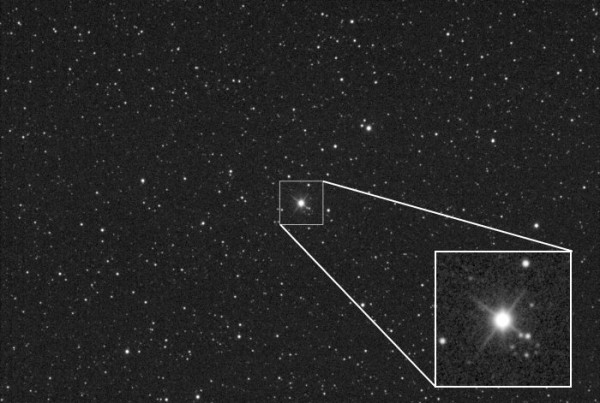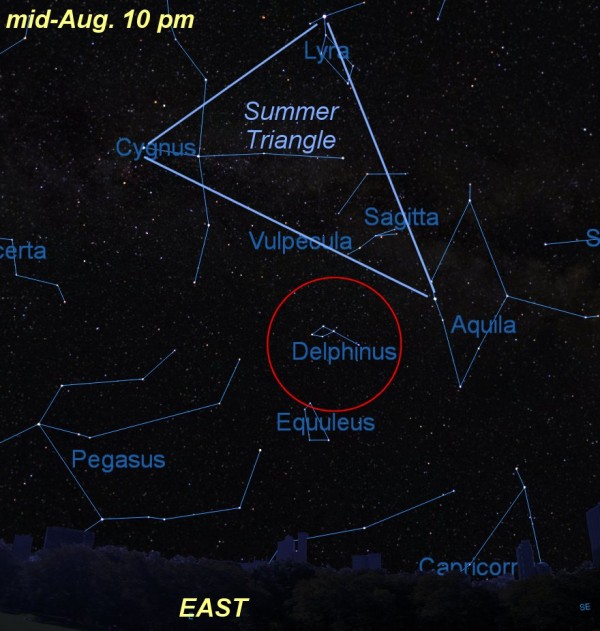Watch Erupting Star Live
New star, called Nova Del 2013, is now brightening fast in the constellation Delphinius. The erupting white dwarf should now be an easy target for binoculars and soon for naked-eyes too.
Whether in the sky or on the web, stargazers around the world are getting a chance to watch a ‘new’ star blow its top before their eyes.
The stellar explosion in the constellation Delphinius is brightening so fast in the skies that it is on the verge of being visible with the naked-eye according to reports from Sky and Telescope website.
Kiochi Itagaki, an amateur astronomer in Japan, discovered the star a day ago (Aug.14) by using nothing more than a modest 7 inch scope with a digital camera. The brightening star, called a nova, has already passed magnitude 6 – making it an easy target for binoculars even from light polluted cities. If it continues brightening it may become visible in the next few days with the unaided eye from dark skies.
Finder chart for Delphinius constellation in the evening sky. The Summer Triangle helps track down the small Dolphin star pattern. Credit: Starry night Software/A.Fazekas
Nova like this represent violent explosions of tiny white dwarf stars in the outer atmosphere. These Earth-sized hot cores of long dead Sun-like stars that end up going nova have a companion star from which they gravitationally siphon off their gases. Over time this matter accumulates on the white dwarf surface until it reaches critical temperatures and ignites in a massive thermonuclear explosion that can be seen for thousands of light years away.
How bright it will this one get is anyone’s guess but it’s pretty amazing considering nothing was visible in that spot in the sky before this week.
The nova’s precise celestial coordinates are at right ascension 20h 23m 31s, declination +20° 46′. The American Association of Variable Star Observers (AAVSO)- an international clearing house for observational data on stars the change in brightness – has prepared this detailed finder’s chart to use at the telescope for this new star in our sky.
Armchair astronomers can also catch the stellar blast on a live webcast today right here, direct from SLOOH observatory on the Canaray Islands off the west coast of Africa starting at 4 PM PDT / 7 PM EDT.(Posted by Andrew Fazekas in StarStruck on August 15, 2013)













